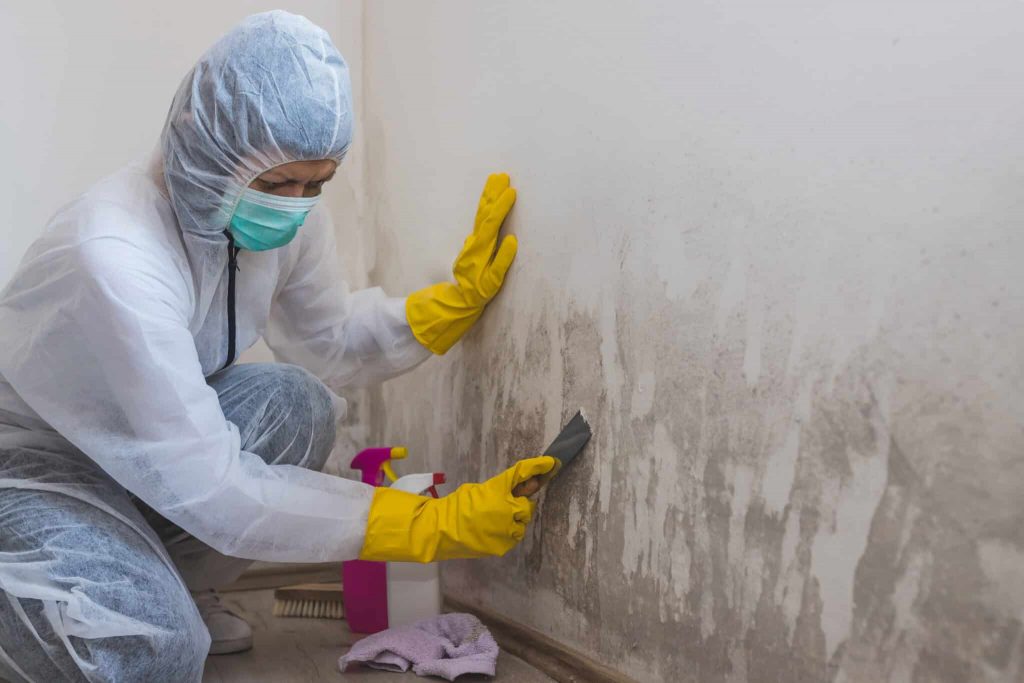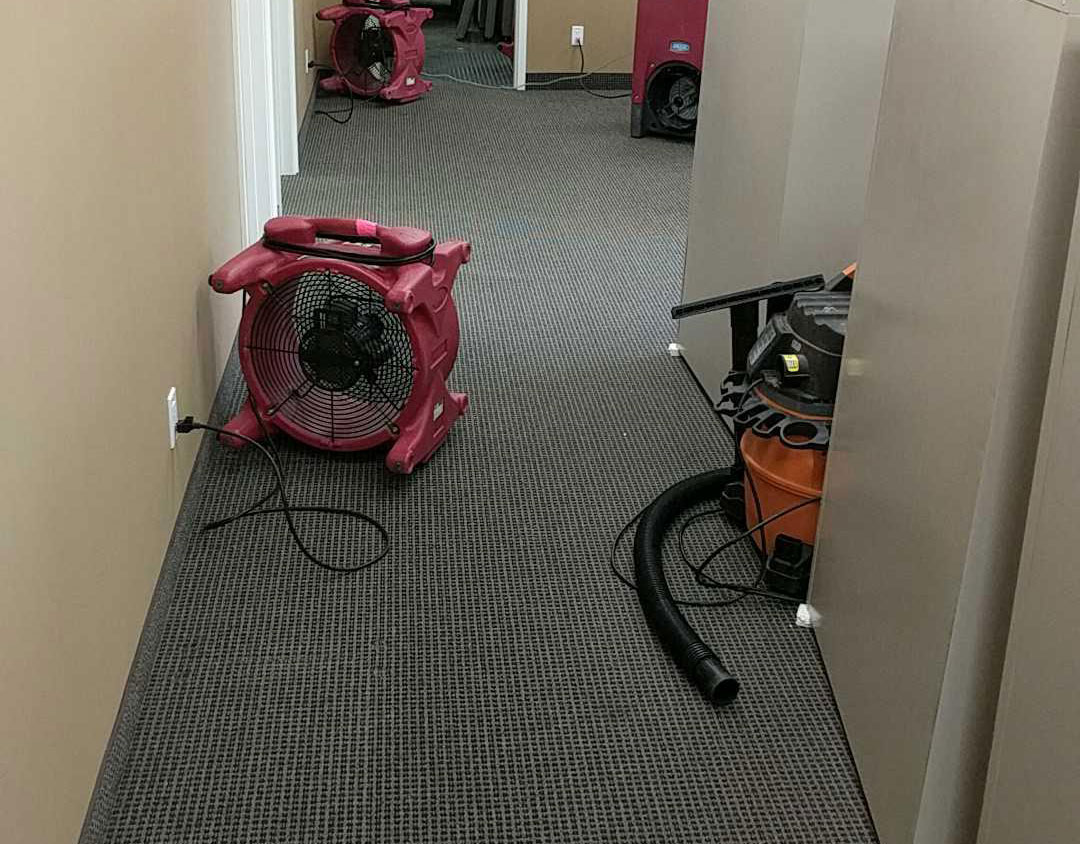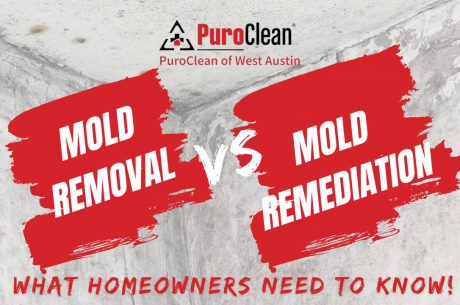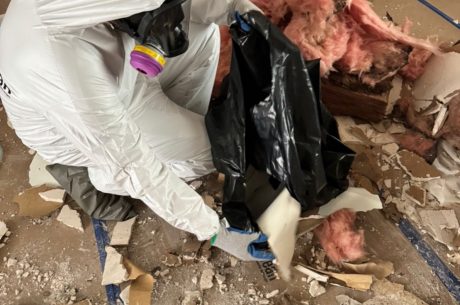Table of Contents
Understanding the urgency to address mold after water damage is paramount for safeguarding health and maintaining a safe, clean environment. Mold from water damage can develop within 24 to 48 hours, making a swift response critical to prevent further problems. The presence of mold and water damage not only compromises structural integrity but can also pose serious health risks by affecting air quality. This necessitates a knowledgeable approach to mold prevention and management to protect both property and inhabitants.
This article delves into effective strategies for dealing with mold after water damage, encompassing the identification of mold, initial mitigation steps, cleaning and disposal of affected materials, and long-term prevention techniques. Emphasis will be placed on early detection, the importance of air circulation for drying out areas, and the need for thorough cleanup and maintenance to avert mold proliferation. By exploring these strategic measures, the article aims to provide a comprehensive guide for tackling mold issues stemming from water damage, ensuring a mold-free and healthy living space.
Identifying Mold After Water Damage

Where to Look for Mold
Mold can develop in various hidden and visible locations following water damage. Common areas to inspect include behind walls, under floors, and within attics. Closets, pantries, and basements are also prone to mold, especially if they are adjacent to the water-damaged sites. Homeowners should be vigilant in checking these areas regularly after any incident of water intrusion. It’s crucial to inspect both visible surfaces and hidden spots, such as behind insulation, wallboards, or ceiling tiles, where mold can thrive undetected.
Learn more: Mold Removal: How to Know if Mold Is in Your Walls
Signs of Mold Growth
Identifying mold involves looking for certain telltale signs. A persistent musty odor is often the first indicator of mold presence. This scent can permeate through the house, signaling compromised air quality. Visual signs include discoloration, peeling paint, warping, and the appearance of dark spots or fuzzy splotches on surfaces. Homeowners might also notice increased allergy symptoms such as sneezing, coughing, or itchy eyes, which can suggest the presence of mold spores in the air.
Using Mold Detection Tools
For a more thorough investigation, using specialized mold detection tools can be highly effective. Moisture meters are invaluable for identifying wet areas that are susceptible to mold growth. These devices can detect moisture in walls, ceilings, and floors, pinpointing areas that may not be visibly damaged but are damp enough to support mold. Additionally, mold test kits can help confirm the presence of mold spores on surfaces or in the air. For comprehensive assessments, professional mold inspection services utilize advanced equipment and techniques to identify mold types and the extent of infestation, ensuring that no area is overlooked.
Initial Steps to Prevent Mold after Water Damage
Quick Water Removal
Immediately after experiencing water damage, it is crucial to remove standing water as quickly as possible. Utilizing a sump pump can effectively evacuate large volumes of water, while a wet-dry vacuum may be employed for smaller areas. This step is essential as mold can develop within 24 to 48 hours after exposure to moisture. Additionally, homeowners should manually dry out hidden areas such as the insides of cupboards and check appliances for any residual moisture that could foster mold growth.
Proper Ventilation
Opening doors and windows enhances air circulation, significantly aiding the drying process and preventing mold proliferation. Homeowners should use fans strategically placed to direct moist air out of the building and dehumidifiers to reduce indoor humidity. This is particularly important in naturally damp areas like basements, where ongoing use of a dehumidifier is advisable to maintain a dry environment. Ensuring that home appliances that produce moisture, such as clothes dryers and stoves, are properly vented to the outdoors also helps in maintaining low humidity levels.
Using Dehumidifiers
Dehumidifiers play a pivotal role in maintaining an optimal indoor humidity level, ideally below 60 percent as recommended by the Environmental Protection Agency (EPA). These devices not only help in reducing the moisture conducive to mold growth but also contribute to a healthier living environment by mitigating potential allergens like dust mites. For convenience, homeowners should consider dehumidifiers with features such as continuous drain options, air filters, and Energy Star ratings for efficiency. Continuous monitoring and adjustment of humidity levels using a dehumidifier will ensure a mold-resistant and comfortable home atmosphere.
Cleaning and Disposing of Water-Damaged Materials
Using Suitable Cleaning Products
When addressing mold after water damage, selecting the right cleaning products is crucial for effective mold prevention and removal. Products such as Jon-Don’s antimicrobial sprays and the ProRestore MediClean® Disinfectant Spray Plus offer robust protection against mold and bacteria growth. These products are formulated for use in water damage and flood remediation, ensuring that surfaces are not only cleaned but also safeguarded against future mold infestations. For more targeted applications, the Benefect Botanical Disinfectant and the Fiberlock ShockWave Disinfectant & Cleaner are excellent choices, providing effective cleaning while being environmentally conscious.
Proper Disposal Methods After Water damage
Disposing of water-damaged materials properly is essential to prevent further mold growth and contamination. Before disposal, ensure that all materials are thoroughly dried and treated with appropriate disinfectants. Materials like damaged drywall, insulation, or carpet should be sealed in heavy-duty trash bags before removal to minimize the spread of spores. Check with local waste management services for specific disposal guidelines, as some materials may require special handling or disposal at designated facilities to comply with environmental regulations.
Cleaning Non-Porous Surfaces
For non-porous surfaces, which do not allow mold to penetrate and form deep-rooted structures, a simple cleaning solution can be effective. A mixture of dish soap, vinegar, and water is recommended. This solution should be applied using a spray bottle, covering all affected areas comprehensively. After application, it’s important to wipe the surfaces with disposable paper towels to remove the mold. Vinegar, being non-toxic and biodegradable, serves as an excellent cleaning agent that is safe for the environment and effective at killing most molds. Always ensure that the cleaned areas are dried thoroughly to prevent any residual moisture from fostering new mold growth.
Long-Term Mold Prevention Strategies
Repairing Leaks and Enhancing Insulation
To effectively prevent mold over the long term, addressing moisture sources such as leaks is crucial. Homeowners should promptly fix any leaks in the roofing, plumbing, or windows to prevent water accumulation. Enhancing insulation is equally important, especially in areas prone to condensation such as attics and crawl spaces. Modern insulation materials are designed to be mold-resistant and help maintain a dry environment by managing temperature and moisture levels within the home.
Regular Maintenance and Inspections
Regular maintenance and inspections are vital to ensuring a mold-free environment. Homeowners should schedule routine checks of HVAC systems and ductwork for any signs of moisture accumulation, which can be a breeding ground for mold. It is also recommended to inspect and clean gutters and downspouts to ensure proper drainage away from the building’s foundation. Regular cleaning and the application of mold-resistant coatings on susceptible surfaces can further safeguard against mold growth.
Using Mold-Resistant Products
Incorporating mold-resistant products into the home can significantly reduce the risk of mold development. For instance, using drywall that is specifically designed to resist mold can be beneficial, particularly in moisture-prone areas like bathrooms and basements. Applying antimicrobial mold-resistant sealants on wood framing and other vulnerable surfaces provides an additional layer of protection. Homeowners should also consider the use of silicone caulk around windows and doors, as it is treated with biocides to enhance mold resistance, ensuring long-term protection from mold intrusion.
Here’s How to Get Professional Help to Prevent Mold Growth
As a homeowner eager to quickly return to your normal life, the simplest solution is to call us at ((512) 953-2548 and contact Puroclean of West Austin today. Our phone lines are manned by live representatives 24 hours a day, 7 days a week, ready to assist you.

Our IICRC-certified technicians will arrive equipped with specialized gear, ensure thorough cleaning and drying, and even facilitate repairs, including drywall replacement and minor or major structural work, to get your home back in order.



